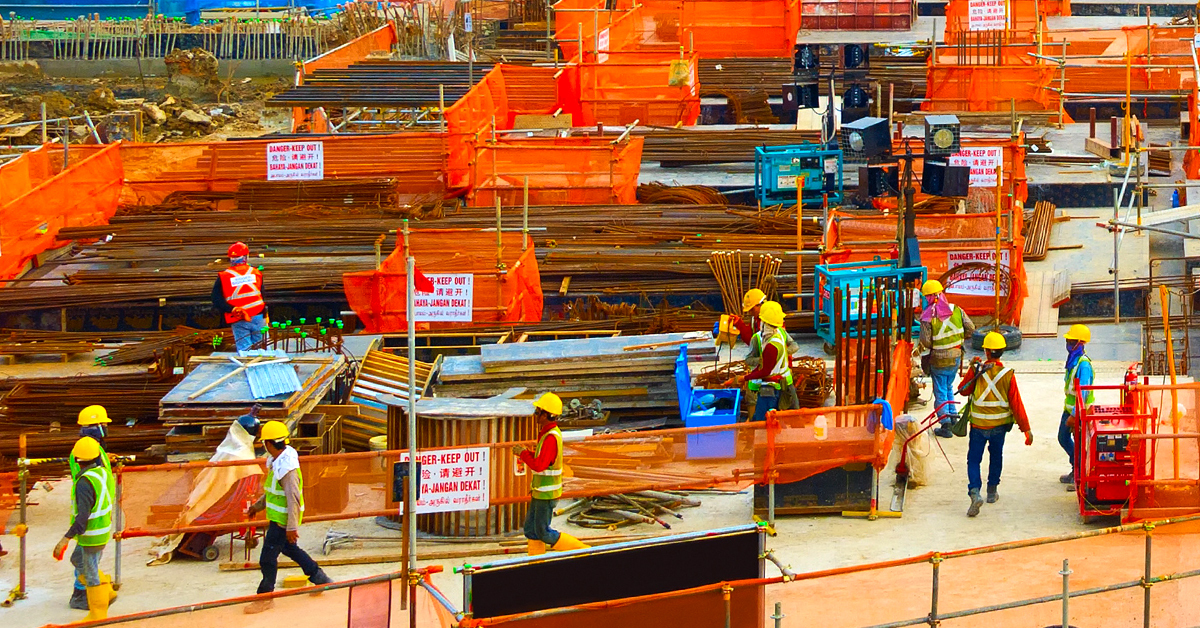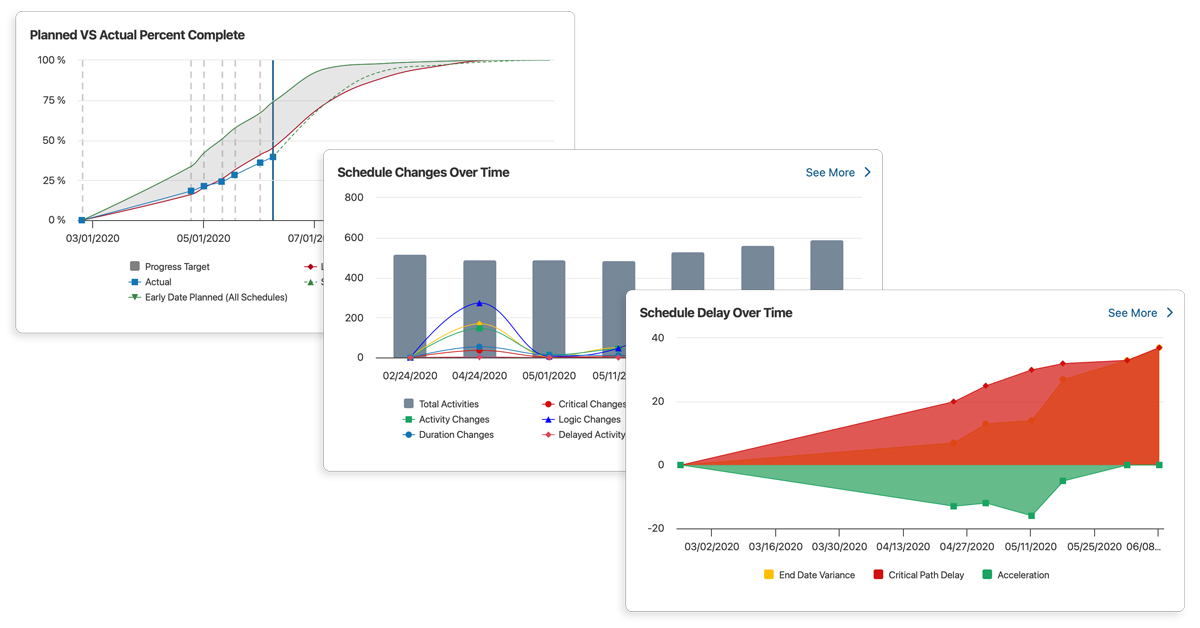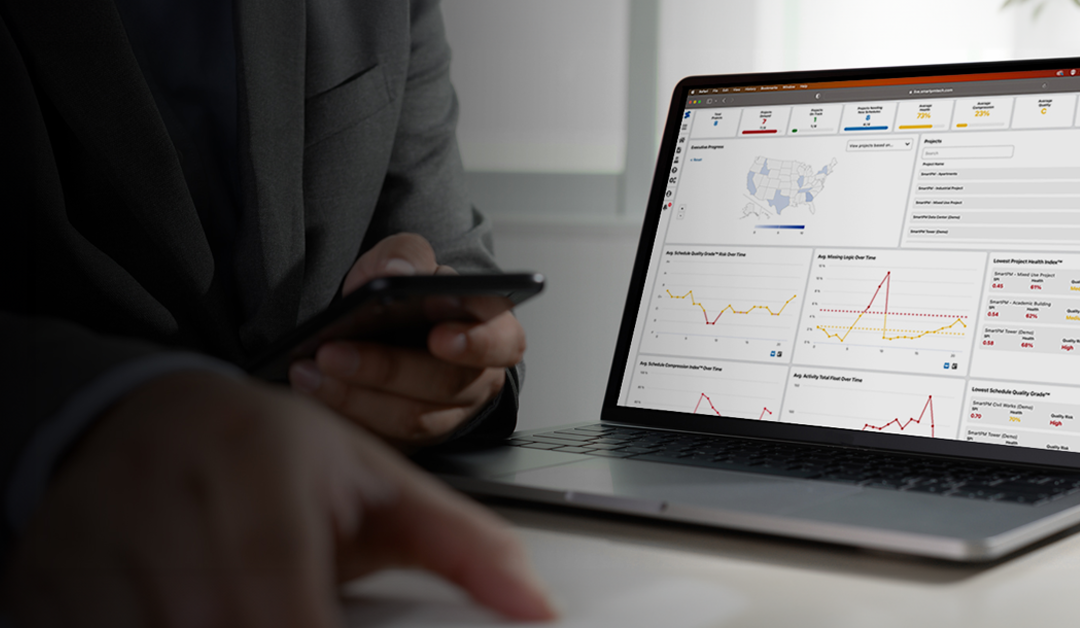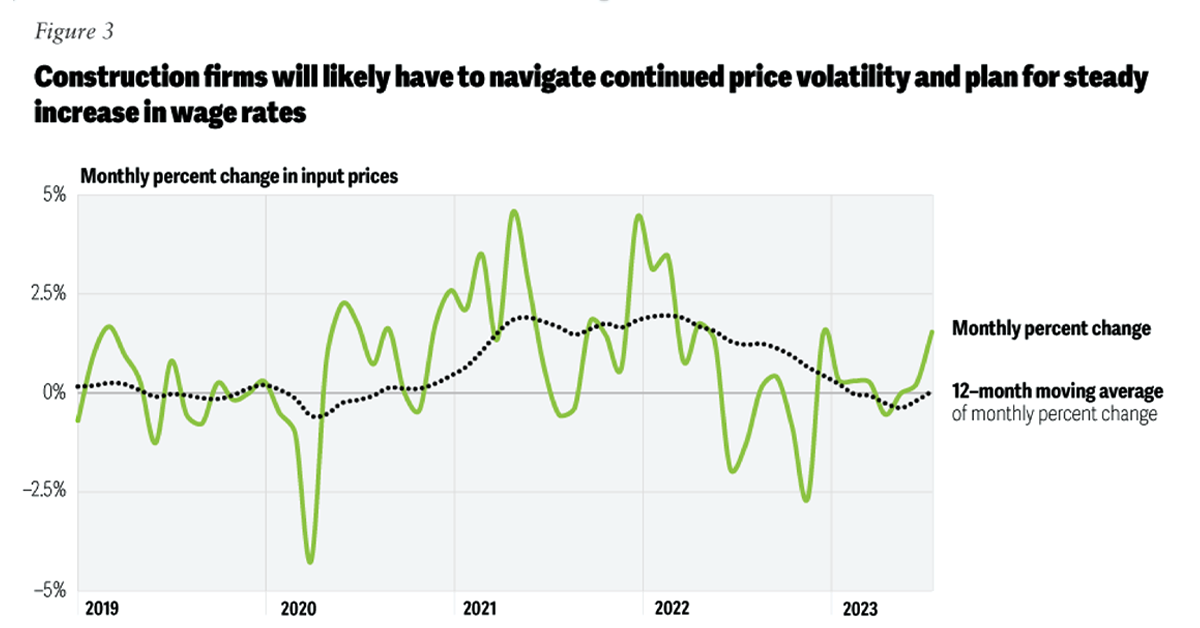Making sense of all of your data from all of your projects can feel like trying to understand a foreign language. But, when we break it down into steps, it starts to make a lot more sense.

- News
Putting the ‘Smart’ in Project Management with Project Controls
According to Deloitte’s 2024 engineering and construction industry outlook, nominal construction spending remained stable in the latter part of 2023. However, the study also emphasizes that while this might seem ideal at first glance, there is more to the story.
“…much of the top line growth is likely being driven by price inflation versus volume. In addition to grappling with ongoing inflation, the industry is facing volatility in material prices and increasing labor costs. Another significant challenge is the ongoing shortage of skilled labor, which continues to impact the sector. Moreover, high interest rates and tighter lending standards are also impacting construction activity.”
Higher interest rates are leading to less spending in construction, creating a less lucrative industry. When spending flatlines, resulting in less construction activity, the industry becomes more competitive. This competitiveness necessitates differentiating your company from others to stay ahead.
Regarding the Economy
The economic climate influences financial strategy. During periods of higher spending, owners are more inclined to issue change orders, anticipating that they can recoup lost profits in subsequent builds. Conversely, in times of low spending, when money becomes more expensive, owners scrutinize every dollar, fighting to secure their margins.
This varying dynamic underscores a crucial point: delays are a constant in construction, irrespective of the economy’s state. The question then becomes, why do these delays persist despite varying economic conditions? This query leads us to reevaluate our approach and pivot toward innovative remedies.
Creating a Proactive Solution
When I began my journey in the construction industry, most of my work was retrospective. I was primarily a Delay Analyst, after all. Analyzing various data sets to determine where projects went awry is a manual, post-mortem process. As a problem-solver by nature, looking back at what went wrong rather than proactively preventing issues began to feel counterproductive and somewhat frustrating, pushing me towards developing more forward-thinking strategies and solutions.
So, as we begin the year, worried about the impact of last year’s lead times, price volatility, inflation, labor shortages, and whatever else might impact our builds, I’d like to propose a paradigm shift towards a more proactive, integrated approach. This is where embedding project controls into the fabric of your organization comes into play. With the ample capabilities of emerging construction technology, our hope is that the industry begins to work smarter, not harder, this year with something you already have plenty of: data.
As we embrace this proactive, data-driven approach, it’s essential to clarify the roles and distinctions within the project management framework. A key aspect of this is understanding the relationship and differences between project management and project controls. These two critical components, when combined, can successfully influence the outcome of your projects.
Project Management vs. Project Controls
According to the Project Control Academy, there are three main differentiators between project management and project controls.
- Project Controls is a subset of Project Management and focuses on managing the project’s cost and schedule.
- Project Managers direct the work of the project team. Project Controllers advise the Project Manager and teams of potential cost and schedule risks and recovery plans.
- Project Controllers generate cost and schedule information, while Project Managers consume the information to make decisions for the project.
In essence, project controls alert stakeholders about the red flags throughout the entire project lifecycle. Project managers can then make informed decisions to control their projects using the data-centric KPIs and reports that project controls provide. Sounds great, right?
It is. Yet, the industry tends to view “project control” as the responsibility of a person or department. After all, as mentioned above, the responsibility of the Project Controller is to support the Project Manager. While this is historically true, the belief that such responsibility falls on one person/department leaves massive amounts of crucial data unused. Without effective use and understanding of project data across the board, project managers are navigating aimlessly.
Refining the Definition of Project Controls
Construction’s prevalent issues – overruns and delays – stem from a fundamental misunderstanding of project controls. It’s not a box-checking exercise or a responsibility to be shouldered by a contractor alone. Nor should it be confined to the realms of a scheduler or project manager. It is a collaborative effort, essential at every level of an organization.
Project controls are not just a subset of project management; they are its backbone, focusing on meticulous monitoring and analysis. Project managers steer the ship, dealing with client interactions, quality, scope, and approvals. On the other hand, project controls focus on making data digestible so that project managers can make better decisions.
Even having a project manager is a project control, as is scheduling software. But, they are only one step. The only way to have a systematic standard of project controls is by integrating all these systems with technology and using the data to influence outcomes.
SmartPM: Putting the Smart in Smart Project Management
Specialized software programs play a crucial role in the construction industry, particularly in creating and maintaining strict project controls. These software solutions enable project managers to monitor and manage every aspect of construction projects with precision, from the initial planning stages to the final delivery.
This is exactly how SmartPM works. Many companies use it to generate quality schedules, detailed analyses, and insights to help keep a project on time and within budget. But it is capable of so much more, including cost and resource allocation, managing performance, and risk assessment. With its multitude of integrations, it offers thorough and accurate data analysis, enabling conversations rooted in truth and informed decision-making.

Smart Project Management means utilizing project controls that are available, functional, and usable. How? Through people and technology working in unison. By bringing project controls to a collaborative level and providing visibility across multiple layers of your organization, you’re acting responsibly and setting your projects up for success–regardless of the state of the industry.
Whether you want to enhance your project management or project control process, there’s no time like the present. You don’t have to change how you build, but you can change how you manage. If you’d like to see how to automate your project controls and manage your projects the smart way this year, fill out the form below, and I’d be happy to show you how.
RELATED STORIES

Making Construction Data Analytics Easier to Understand
Making sense of all of your data from all of your projects can feel like trying to understand a foreign language. But, when we break it down into steps, it starts to make a lot more sense.

Overcoming Confirmation Bias in Construction Project Management
Confirmation bias can be particularly problematic in project and schedule management, where decisions must be based on accurate and comprehensive information.

Top Construction Scheduling Software in 2023
SmartPM’s recognition as a top construction scheduling software in 2023 attests to the immense value in automated project controls.

The Top 5 Breakdowns in Construction Schedule Management
Schedule management involves navigating a complex landscape of risks that can significantly impact project budgets and timelines.


